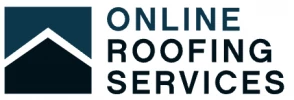Late updated: 06 Jun 2024 00:06
Written by: Oliver Bennett
Common Roof Problems in UK Homes and Solutions: Expert Advice and Fixes
Roof problems are a common issue faced by homeowners in the UK, often leading to significant damage if not addressed promptly. One of the most prevalent issues is roof leaks, which can result from damaged or missing tiles, clogged gutters, or faulty flashing. These leaks can cause extensive water damage to your home and promote the growth of mould, compromising both the integrity of your roof and the health of the household.
Regular maintenance is essential to prevent these problems. Poor ventilation is another frequent concern that can lead to dampness and structural issues. By ensuring your roof is adequately ventilated, you can avert many complications that arise from trapped moisture.
Additionally, chimney-related issues such as bad flashing or incorrect capping often lead to water ingress and weather damage around the chimney area. Employing proper chimney repairs and maintenance practices will help maintain your roof's health and prolong its lifespan. These steps, although straightforward, can save considerable time and expense in the long run.
Identifying Common Roof Issues and Immediate Solutions
Understanding common roof problems and how to address them promptly can save homeowners from expensive repairs and safeguard the structural integrity of their property.
Leak Detection and Repair
Leaks are a primary concern for UK homeowners. Common causes include damaged tiles, clogged gutters, and poor flashing. We should check for water stains on ceilings and walls as these are early indicators of leaks.
To repair leaks, identify the source, replace damaged tiles, and apply a waterproof sealant. In cases of damaged flashing around chimneys, re-seal or replace the flashing with roofing cement and proper counterflashing techniques. For minor leaks, a patch kit can be a temporary solution until professional help is available.
Maintaining Structural Integrity
Structural damage can result from prolonged exposure to harsh weather, ageing, or substandard construction. Signs include sagging roofs, cracked rafters, and trusses. Regular inspections can help spot these issues early.
To maintain and repair structural components, we need to ensure that supports, rafters, and trusses are intact. Reinforcing weakened areas with additional supports can prevent further damage. In some cases, professional evaluation by a roofing contractor is essential to determine the appropriate repair strategy.
Ventilation and Moisture Control
Proper ventilation is crucial to prevent mould growth and moisture-related damage. Poor ventilation can lead to condensation and mould, which compromise the roof's integrity. Indicators of inadequate ventilation include musty odours and visible mould.
Improving ventilation involves installing ridge vents, soffit vents, or attic fans to enhance airflow. It is also vital to ensure that insulation does not block ventilation paths. Regularly checking and maintaining ventilation systems helps in controlling humidity and extending the roof's lifespan.
By proactively addressing these common roof issues, we can ensure that our homes remain safe, dry, and structurally sound.
Preventative Measures and Long-Term Solutions
Ensuring the longevity of our roofs involves a combination of proactive maintenance, efficient gutter management, and professional services to handle potential issues. Additionally, considering environmental factors can significantly reduce common roofing problems such as leaks, cracked flashing, and missing shingles.
The Importance of Regular Roof Maintenance
Regular roof maintenance is crucial to preventing major issues. By scheduling inspections twice a year, we can identify early signs of damage, such as loose or missing shingles and damaged flashing.
Routine checks help us spot potential problems before they escalate, saving time and money on expensive repairs. We should also examine areas around chimneys and skylights, as these are prone to leaks.
During inspections, looking for pooling water, shrinking roofing materials, and other signs of wear can help maintain the roof’s integrity. Simple tools like a hammer and roofing nails can fix minor issues, but it's important not to ignore any defects, no matter how small.
Efficient Gutter System Management
A well-maintained gutter system is essential to prevent water damage. Gutters should be cleaned regularly to avoid clogging, which can lead to water pooling on the roof and eventual leaks.
Blocked gutters can cause serious issues, including ice dams in winter. Ensuring downspouts are clear and directing water away from the foundation protects both the roof and the structure.
Installing gutter guards can significantly reduce the frequency of gutter cleaning by preventing debris build-up. Regular checks for loose or damaged sections are important in maintaining their efficiency.
Professional Roofing Services
Engaging with a reputable roofing company ensures that repairs and installations are carried out to a high standard. Poor installation practices can result in many problems including leaks and premature roof failure.
Professionals can provide comprehensive inspections and identify issues that may not be obvious to the untrained eye. They also have access to better quality materials and can offer warranties on their work, providing peace of mind.
Whether it's for roofing repairs, roof replacement, or just a consultation, professional services are invaluable. It’s always best to address minor issues promptly with skilled workmen to avoid costly future repairs.
Dealing with Environmental Factors
Our roofs are subject to various environmental factors such as wind damage, heavy rainfall, and temperature fluctuations. Using durable roofing materials can help withstand these conditions.
Installing proper roofing ventilation reduces heat and moisture build-up, extending the lifespan of the roofing materials. Factors like trimming overhanging tree branches can prevent damage from falling limbs.
In areas prone to extreme weather, reinforcing the roof’s structure might be necessary. Considering local climate conditions when selecting materials and designs can help mitigate the risks associated with environmental factors.
